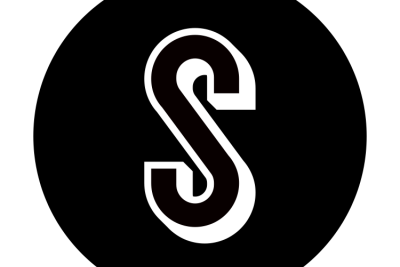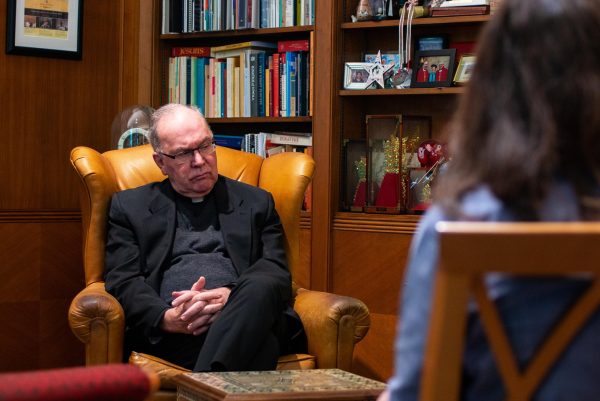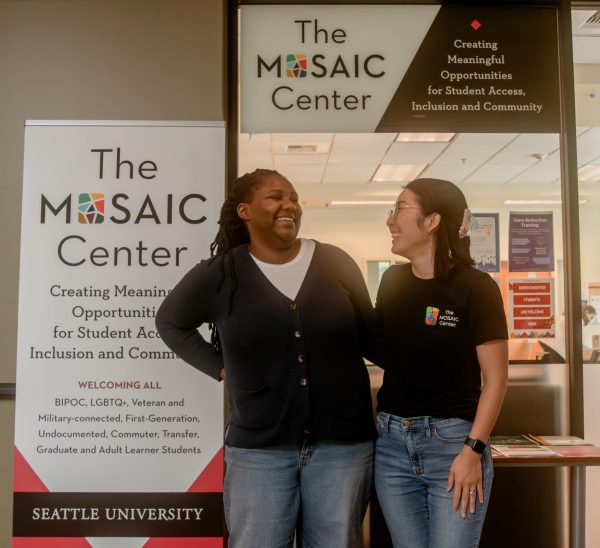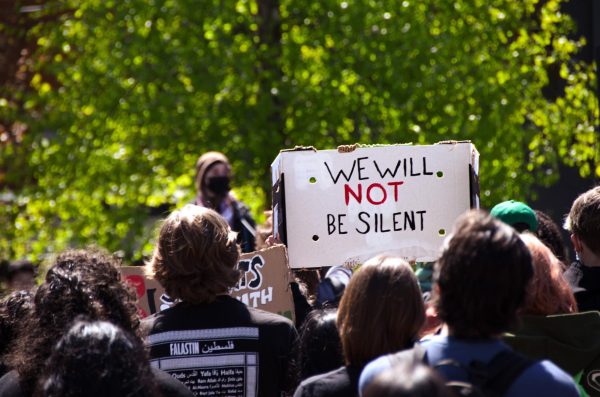A Year of Reflection Amid Ongoing COVID-19 Pandemic

Spring break 2020 marks the one year anniversary of Seattle University students living with the COVID-19 pandemic. Up until that point, students, faculty and staff at Seattle U said their goodbyes, predicting a return to campus just two short weeks later. However, an email from Seattle U President Fr. Stephen V. Sundborg, S.J., March 13 confirmed the university’s suspension of in-person classes through the spring quarter, which was later extended to the entire 2020-2021 academic quarter.
For Third-year Communication & Media major Emma Mitchell, the strangest part of the change was not being able to recognize someone with a mask on and not seeing a stranger’s full face.
“I love people watching, but it just isn’t fun anymore. I have felt severely impacted by distance—the inability to hug someone or just stand close. You wouldn’t think it’s that important, but as the saying goes, you don’t appreciate the things you have until they’re gone,” Mitchell said.
From walking to the mailbox to dining at restaurants, wearing a mask has become normalized in a world where humans previously stood shoulder to shoulder at large communal gatherings. In March 2020, things began to look different for Seattle U community members as COVID-19 spread across the nation.
The first case of the novel coronavirus was confirmed Jan. 21, 2020 in the Snohomish County of Washington State. The State Department of Health staff announced 247 deaths from 5,984 cases April 1, 2020. At this time, the nationwide U.S. death toll reached 5,000. As time passed, the number of new cases and deaths continued to rise in Washington State. As the U.S. reached 2,000 deaths, former President Trump declared COVID-19 a nationwide pandemic March 22, 2020.
The pandemic continues to impact the education system nationwide, and students at Seattle U have experienced the mental and emotional effects of transitioning from traditional academia to an entirely remote learning environment.
Since March 23, 2020, when Gov. Jay Inslee enacted the Stay Home, Stay Healthy order, Washingtonians have been living a new ‘normal.’ Scientists have proven the act of social distancing reduces the spread of COVID-19, which is a clear indication as to why students from elementary to the collegiate level of learning transitioned online.
For Seattle U students, there has also been a two percent increase in tuition since the previous academic year. President Fr. Stephen V. Sundborg, S.J., claimed the school looked at the increase in tuition very carefully by taking into consideration faculty and staff.
“To be able to be fair to the faculty and staff at the university, we needed to have a little bit of increase in the tuition in order to be able to compensate them and help them in their retirement a little more,” Sundborg said.
In the 2019-2020 academic year, Seattle U faculty and staff did not receive any compensation increase. Additionally, three quarters of their retirement was taken away from them. While it is important to ensure faculty and staff are considered financially, the deliverance of online learning is costly and in many ways is significantly higher than in-person learning. These factors have all contributed to the increase in tuition for the following academic year.
“The development and trading of technology and so forth that need to be invested in the courses is why we kept it the same cost as in-person,” Sundborg said.
While other stresses arose with online learning, the combination of remote learning with COVID-19 has impacted students greatly. For Second-year Psychology major Cam Davison, his social and physical life have been altered the most by the pandemic.
“It’s a bit harder to connect with people and stay active. That being said, I am a bit more used to online learning at this point and it feels more normal than it did at the start,” Davison said.
The absence of face-to-face lecturing has impacted students not just academically, but emotionally. For Fourth-year Communication major Brady Mathis, it has meant coming to terms with at-home learning.
“I’ve been able to settle into online learning and online meetings a lot more since the pandemic started. The first couple months of online learning was difficult for me. Now, it’s becoming more of a routine that’s just the reality of everyday life. It is what it is at this point,” Mathis said.
Both students agreed the switch to online learning has started to feel normal.
“It’s weird to think, but I am actually at the point where I have had more quarters online at Seattle U than in person. I think sometimes the online format impedes communication and can make some assignments unclear, therefore making them a bit more stressful,” Davison said.
The opportunity for students to freely and safely interact with their classmates and professors without restrictions seems to be a key component that is missing among the Seattle U community. However, the change from in-person learning to online learning has also allowed students to reflect on what they once took for granted.
Third-year Graphic Design major Brianna Tam noted seeing what her classmates look like as something she took for granted, an aspect of online learning that has been difficult and nonexistent for many.
“I didn’t realize how impactful and meaningful even small day to day in-person interactions are. I took for granted being able to know and see all of my classmates. With some of my online classes now, I don’t even know what some of my classmates look like or where they’re from,” Tam said.
The one-year anniversary of the COVID-19 outbreak has also allowed students to reflect on what ‘normal’ is and push to find ways to navigate the changes the pandemic has created.
“Being able to adapt to changes that are out of my control is important. Where I focus my time and energy in what remains uncertain helps me in the present,” Mathis said.
Since the Stay Home, Stay Healthy order was enacted, Seattle U faculty and staff have been forced to learn how to manage their work-life balance, too.
Assistant Professor in the Communication and Media Department Julie Homchick Crowe believes that, despite times of momentary chaos the pandemic has brought about as a full-time professor and a full-time mother, her family is fortunate to be handling it well.
“Those moments have shown me how gracious my colleagues are and how generous our students are. The biggest drain for me doesn’t have anything to do with having my kids at home, but is being on video calls and feeling disconnected from students and colleagues through that format,” Crowe said.
Redhawks are finding a silver lining in the chaos of the past year, however—regardless of its drastic changes.
“Being remote has made me more productive,” Mathis said, noting that not all aspects of a virtual learning experience are negative.
Given the state of the pandemic and social distancing guidelines, campus life has become quiet and empty. There are no longer floods of students walking across campus during passing periods or gathering in the dorms. There is no Redzone cheering at sporting events. Nevertheless, the 2020-2021 academic year has offered the community a choice—to be frustrated with the present, or reflect on it.
“What I’ve learned is you can go deep in a time like this. You can either be frustrated at the limits or settle into it. You can be more present to yourself and you can be a little more reflective. You can draw from more deeply within you because you are confined more than what you are usually doing. I’ve learned this is a good thing,” Sundborg said.
When reminiscing on life before COVID-19 and the trials it has brought, it is important to pay tribute to those who have lost their lives as a result of the virus. Some were well-known, while many were unsung. From all walks of life, the mortality rate of COVID-19 in the state of Washington has surpassed 5,000. The Washingtonians lost will serve as a permanent reminder of the tragedy and impact the choices people make on a daily basis.
As of Feb. 22, there has been a distribution of more than 1,411,453 doses of the COVID-19 vaccine across Washington State. The vaccine distribution includes doses of Pfizer-BioNTech, Moderna and Johnson & Johnson / Janssen. And though allocations of the vaccine are increasing, it is still in very high demand. The state is confident, however, that it can provide vaccine doses for all counties and set in place proper safety guidelines from the lessons learned after an entire year living in the COVID-19 pandemic. Redhawks know this is just the beginning of a long-term journey in the return to normalcy.










